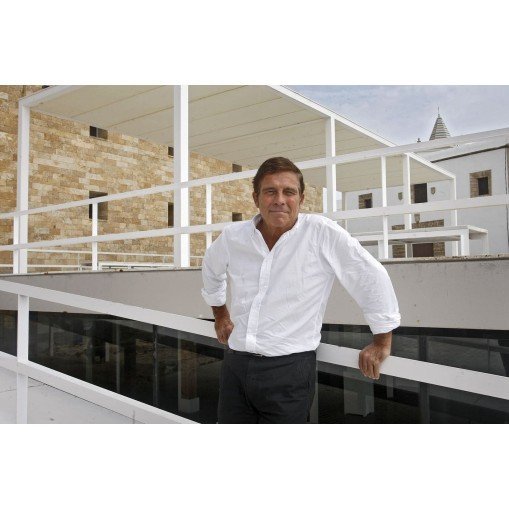
Campo Baeza, Alberto
Alberto Campo Baeza is one of the most prominent Spanish architects of the last decades. Born in Valladolid in 1946, he moved to Cádiz when he was a child. Influenced by his architect grandfather, Campo Baeza decided to follow in his footsteps by studying at the Superior Technical School of Architecture of Madrid. He graduated in 1971 and later completed his doctorate, becoming a professor of projects at the same school for over 30 years starting in 1986.
Campo Baeza has developed an extensive international academic career, teaching classes at prestigious universities in Switzerland, the United States, Germany, Ireland and other countries. In 2014 he joined the Royal Academy of Fine Arts of San Fernando as an academic. He has received important awards such as the Gold Medal of Spanish Architecture in 2019.
Architecture of light and gravity
Campo Baeza's architectural work stands out for the sensibility with which he uses light and gravity to define space. His projects seek essentiality, stripping architecture of superfluous elements. Among his main works are acclaimed private residences such as the Turégano, Gaspar, Blas, Rufo and Moliner houses.
In the field of public architecture, Campo Baeza has carried out emblematic projects such as the headquarters of Caja Granada, the BIT Center in Mallorca, the Benetton kindergarten in Italy or the Museum of Memory of Andalusia. Recently he has captivated with homes such as the Casa del Infinito in Cádiz or the Domus Aurea in Mexico, true jewels of contemporary Spanish architecture.
Career and international recognition
Based in Madrid, Alberto Campo Baeza's studio enjoys global reach. His works have been exhibited in places like the Museum of Modern Art in New York, the Venice Biennale or Palladio's Basilica in Vicenza. Campo Baeza remains active at over 70 years old, integrating new materials and spatial solutions into his projects. His legacy as one of the great Spanish architects of recent decades is beyond doubt.



